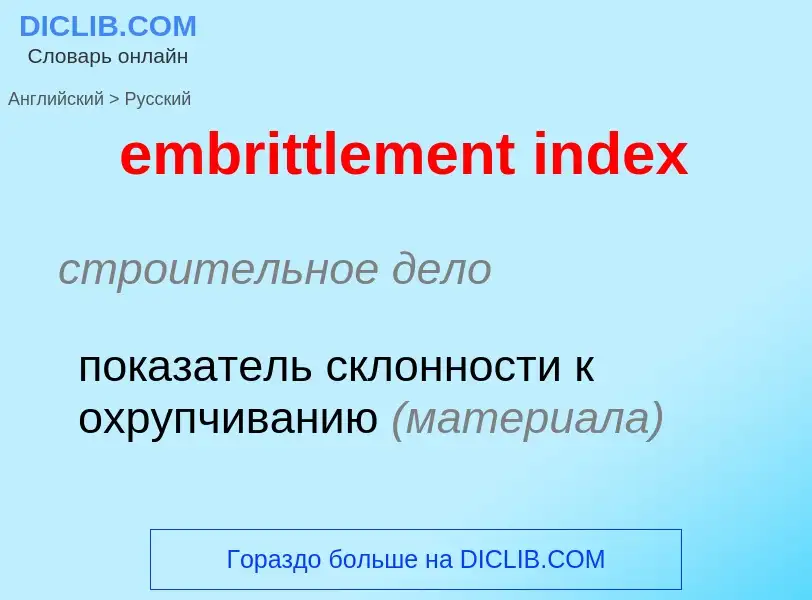Перевод и анализ слов искусственным интеллектом ChatGPT
На этой странице Вы можете получить подробный анализ слова или словосочетания, произведенный с помощью лучшей на сегодняшний день технологии искусственного интеллекта:
- как употребляется слово
- частота употребления
- используется оно чаще в устной или письменной речи
- варианты перевода слова
- примеры употребления (несколько фраз с переводом)
- этимология
embrittlement index - перевод на русский
строительное дело
показатель склонности к охрупчиванию (материала)
['indeksiŋ]
общая лексика
индексация, индексирование
создание индексов
деление
индексация
индексирование
индексирующий
индицирование
нумерация
нумерование
существительное
техника
индексирование
деление окружности на части
периодическая круговая подача
программирование
индексирование (документов)
составление указателей
специальный термин
индицирование
приписывание индексов
Определение
Википедия
Liquid metal embrittlement (also known as LME and liquid metal induced embrittlement) is a phenomenon of practical importance, where certain ductile metals experience drastic loss in tensile ductility or undergo brittle fracture when exposed to specific liquid metals. Generally, a tensile stress, either externally applied or internally present, is needed to induce embrittlement. Exceptions to this rule have been observed, as in the case of aluminium in the presence of liquid gallium. This phenomenon has been studied since the beginning of the 20th century. Many of its phenomenological characteristics are known and several mechanisms have been proposed to explain it. The practical significance of liquid metal embrittlement is revealed by the observation that several steels experience ductility losses and cracking during hot-dip galvanizing or during subsequent fabrication. Cracking can occur catastrophically and very high crack growth rates have been measured.
Similar metal embrittlement effects can be observed even in the solid state, when one of the metals is brought close to its melting point; e.g. cadmium-coated parts operating at high temperature. This phenomenon is known as solid metal embrittlement.

